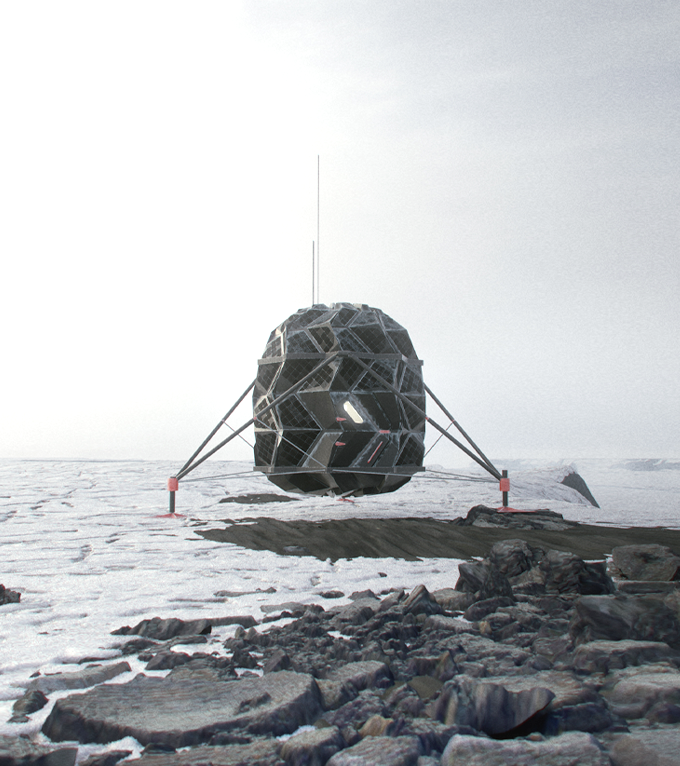

The moons hostile environment makes it difficult to sustain a permanent settlement. But the SAGA crew has already set its telescopes to the final destination: It’s quite clear, we haven’t built anything on the moon yet, and that’s the goal. To make the LUNARK habitat ready for production - a costly process that is quite different from making a one-off - the architects now need to optimise their design. The habitat performed beyond our expectations the large scale origami structure unfolds 750% which is more than satisfactory. The best outcome from the mission was that the habitat worked and that Karl and I, two civilians, could not just survive but were highly functioning during the entire expedition. I asked them what conclusions to draw from this exceptional adventure and what steps to take next for the two visionaries and their team. Every day we needed to chop ice from a nearby iceberg and melt it inside the habitat for drinking water. When you are away from civilisation, many daily chores need to be done. We had a Craftbot 3D printer with us so we could improvise design solutions on site. While Karl had expected a boring three months, the duo instead turned out to be busy researching and improving the habitat. Hence, a kind of tango appeared where we knew each other’s movement so well that when one started to move, the other person would move in parallel without even thinking about it.Īnd there were more surprises along the way. Because the habitat is so small, every time one needed to do something, the other person needed to move as well. When asked about character traits or skills that were particularly helpful, Sebastian says: A funny thing that happened was that we learned to ignore the other person in a good way. He adds.įor Sebastian and Karl-Johann, being respectable of each other’s private life, knowing when to give the other person space, and spending time thinking and reflecting alone has proven to be the most important aspects in maintaining a positive living atmosphere. I miss it already in my apartment here in Copenhagen, so I am building one for personal use. If we had static light for the expedition, I think the story would have been very different.

As soon as the sun “set” inside the habitat, my sleep hormones were so dialled in after just a few days, that I became instantly tired. It truly made the habitat experience more tolerable. Waking up to a sunrise every day was wonderful, I personally have not slept better in many years. The circadian panel proved to be incredibly powerful to sustain or improve wellbeing, says Sebastian Aristotelis. Below the picture, it reads 1.5 years of hard work, and it’s finally happening.įor the rest of us back in civilisation, the past months have as well been marked by varying levels of social-distancing, which sometimes keeps us in the seclusion of our private homes for days. Therefore, gaining insights from the LUNARK mission and learning what design can do to maintain stability in isolation couldn’t have come at a better time.

This mission not only means a reality-check for their design but it also easily becomes a daring self-test, as they are trapped together inside a tiny pod, many miles away from the next base. Some weeks later, the Space Architects pose proudly next to their unfolded moon capsule, anchored into the uninhabited terrain of Moriusaq. August 2020: SAGA’s self-folding LUNARK habitat –– envisioned for a life on the moon and carefully tailored to house the two-person crew during their three-month mission to Greenland –– gets fitted into an iron shipping container and taken to sea.


 0 kommentar(er)
0 kommentar(er)
